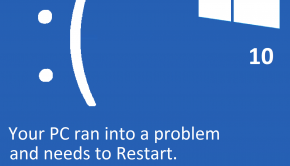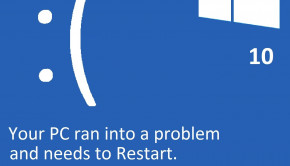How To Do PC Troubleshooting
Reader Question:
“Hi Wally, can you tell me how to do PC troubleshooting?“ - Jose H., Australia
Before addressing any computer issue, I always recommend scanning and repairing any underlying problems affecting your PC health and performance:
- Step 1 : Download PC Repair & Optimizer Tool (WinThruster for Win 10, 8, 7, Vista, XP and 2000 – Microsoft Gold Certified).
- Step 2 : Click “Start Scan” to find Windows registry issues that could be causing PC problems.
- Step 3 : Click “Repair All” to fix all issues.
Setting up weekly (or daily) automatic scans will help prevent system problems and keep your PC running fast and trouble-free.
Wally’s Answer:
Why You Should Do PC Troubleshooting
As the owner of your computer, it’s solely up to you to maintain and take care of it. Doing so will ensure that you get many years of trouble-free use. As a part of that responsibility, is it important to learn basic computer troubleshooting and repair in the event your computer suffers minor problems? Learning simple techniques will help you troubleshoot most computer issues without hiring IT experts and professionals to do the job for you.
Not only does learning these valuable troubleshooting methods save you time and money, but sometimes it might be your only choice. Because problems can occur at any time, like in the middle of the night, for example, you can’t expect someone to come over and fix it. Therefore, it is valuable to know basic computer repair techniques, especially for those emergency situations where your career, school work, or another critical task might depend on it.
There are lots of online resources for computer troubleshooting. If you prefer to have a hard copy in those times where you don’t have Internet access, you can purchase a good book on PC troubleshooting at your local bookstore. Because computers are so prominent in our daily lives, having the ability to solve basic PC problems is more critical than ever.
PC Troubleshooting: Tips & Tricks
The process of finding the cause and fixing computer problems is very simple. It is a matter of figuring out the source of the problem, researching and assembling the necessary repair tools, and creating and executing your plan of action. Here are the three steps to troubleshoot your computer in detail:
Identify the Source of the Problem
The very first step in troubleshooting a computer is to know what the source problem is. If you fail to identify the computer’s problem and its cause, you will likely fail in troubleshooting, because you will not know where to focus your efforts. First, you must categorize the computer’s problem into one of two distinct categories: software related or hardware related. Once you categorize and identify the cause of the problem, it would be much easier for you to research viable solutions to the problem.
Research and Acquire the Necessary Tools
Next, research and acquire all of the necessary troubleshooting tools and utilities for your computer repair task. It’s a good idea to carry a USB flash drive loaded with common utilities (your “virtual toolbox”). This saves you a lot of time downloading all necessary troubleshooting tools such as recovery software, driver software, etc. Also, it’s important to have all of your important files backed up since data loss is a strong possibility during the troubleshooting process.
Create and Execute a Plan of Action
Finally, after you have identified the problem and assembled your tools, list down all the possible solutions that can resolve the issue. Create a checklist of all the solutions you have researched and completed them one by one. If the first solution doesn’t work, then proceed to the next. Keep doing this process until you have finally resolved your problem.
These are just some of the preliminary things that you should consider when troubleshooting a computer. These measures will help you do things right the first time. Remember: only complete those tasks that you can confidently handle yourself. Doing things that require computer knowledge beyond your capabilities will further damage your computer rather than fixing it.
I Hope You Liked This Article! If You Need Additional Support on This Issue Then Please Don’t Hesitate To Contact Me On Facebook.
Is Your PC Healthy?
I always recommend to my readers to regularly use a trusted registry cleaner and optimizer such as WinThruster or CCleaner. Many problems that you encounter can be attributed to a corrupt and bloated registry.
Happy Computing! ![]()

Wally's Answer Rating
Summary: Every Windows Wally blog post is evaluated on these three criteria. The average of all three elements determines an "Overall Rating" for each blog post.














